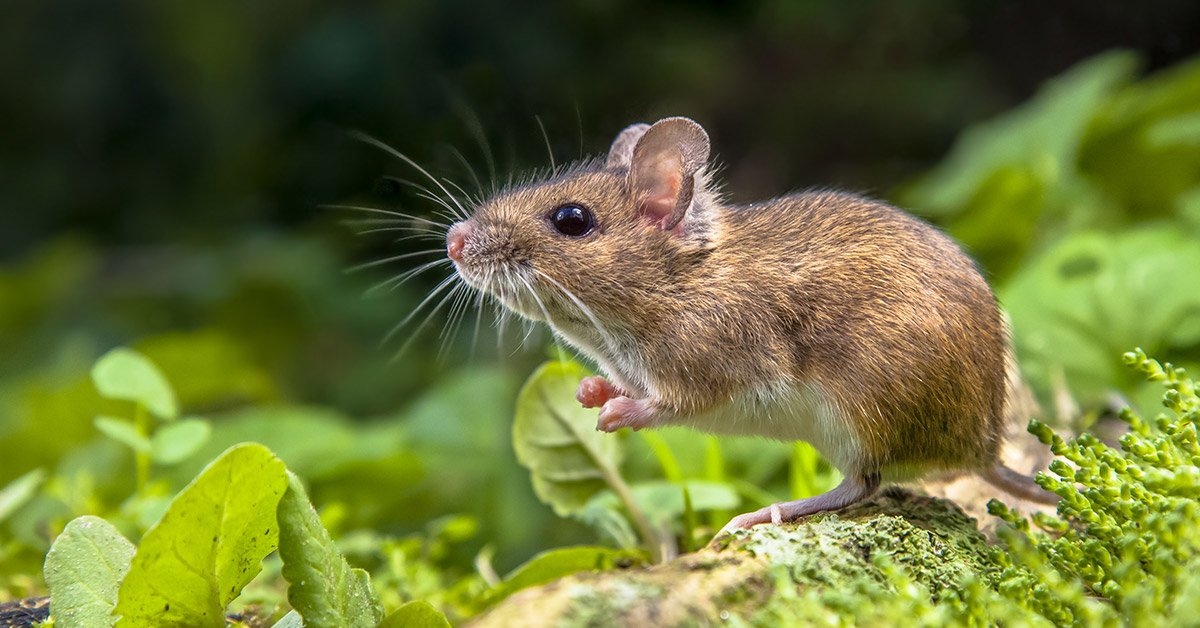
Secret of Epigenetic Inheritance Discovered
While genetics may seem to some like a straightforward way in which parental characteristics are reshuffled and dealt out to offspring, scientists have long known the process reaches a level of complexity only partially understood.
News Source
Last year’s discovery of the functionality of “junk” DNA highlighted this fact. Ongoing revelations about heritable epigenetic changes are another.

Primordial germ cell (PGC) precursors appear early in mouse embryos, about day 6. At this time they still retain the epigenetic switches from their parents. Over the course of the next week, as these cells migrate to the gonadal ridge, these epigenetic markers are ordinarily removed. Once the mouse PGCs take on the gender-specific characteristics dictated by their chromosomes, they begin acquiring their own epigenetic switches and develop into the cells that later mature as sperm and eggs. Similar processes happen in humans. Cambridge researchers have discovered that sometimes the PGCs are not completely reprogrammed, allowing epigenetic markers from the parents to be inherited. Image credit: Nature Publishing Group Sasaki, H. & Matsui, Y. Epigenetic events in mammalian germ-cell development: reprogramming and beyond. Nature Reviews Genetics 9, 129–140 (2008) doi:10.1038/nrg2295 through www.nature.com where a more detailed illustration and explanation are available.
Epigenetics is a system of chemical switches that turns genes on or off. In fact, these regulatory mechanisms may well be represented in that functional “junk” DNA.1 But could genes being switched on and off by life experiences be passed on to offspring? Lamarck’s early 19th century ideas about how a giraffe could evolve a long neck because it had to stretch to reach trees have long been relegated to the bin of absurdity.
But what about recent evidence that epigenetic changes can be inherited? After all, the germ cells that a mouse or a person will later pass on to his or her offspring are produced very early in his or her own embryonic development. How can those germ cells be altered by the environment? Evidence demonstrates this does happen.
Prenatal exposure to famine seems to mark a person’s genes for life according to a 2008 study, and differences between identical twins’ epigenetic markers has been associated with the development of schizophrenia. Mice make a reasonably good model for epigenetic studies, and stress-induced aggression has been documented as a heritable epigenetic trait in mice.2 How can this happen? And do these discoveries have any implications as far as evolutionary claims go?
Ordinarily, whatever epigenetic changes exist in the DNA received by a developing mouse from its parents are erased in the primordial germ cells that develop inside that mouse embryo just a few days after it is conceived. Those primordial germ cells contain the genetic information that that mouse embryo will someday pass on to its own offspring. (See diagram.) Thus, the epigenetic footprints of a “grandparent” mouse’s past normally get removed from its offspring’s germ cells so that they will not be passed on to subsequent generations.
The primordial germ cells in a mouse embryo are the place where this “reprogramming” back to the mouse’s default state take place. Epigenetic changes consist of chemical changes affecting the expression of genes without changing the genes themselves. A typical epigenetic change is “methylation”—the attachment of a “methyl” group to certain places on the DNA. Reprogramming or erasing such an epigenetic marker then occurs by “demethylation”—removing the methyl group.
Researchers from the University of Cambridge studying how this reprogramming occurs discovered that sometimes it doesn’t succeed in erasing every epigenetic change. Though the reprogramming process of demethylation is quite efficient, it does occasionally miss some methylation sites. This allows some epigenetic alterations to be passed on to subsequent generations. This discovery illustrates one way epigenetic alterations can be inherited.
Our research demonstrates how genes could retain some memory of their past experiences, revealing that one of the big barriers to the theory of epigenetic inheritance—that epigenetic information is erased between generations—should be reassessed.
“Our research demonstrates how genes could retain some memory of their past experiences, revealing that one of the big barriers to the theory of epigenetic inheritance—that epigenetic information is erased between generations—should be reassessed,” says Dr. Jamie Hackett, lead author of the report published in Science. “It seems that while the precursors to sperm and eggs are very effective in erasing most methylation marks, they are fallible and at a low frequency may allow some epigenetic information to be transmitted to subsequent generations. The inheritance of differential epigenetic information could potentially contribute to altered traits or disease susceptibility in offspring and future descendants.”
Though mice make a pretty good model to gather data applicable to humans, there are differences yet to be assessed. Thus, Dr. Hackett adds, “It is not yet clear what consequences, if any, epigenetic inheritance might have in humans. Further studies should give us a clearer understanding of the extent to which heritable traits can be derived from epigenetic inheritance, and not just from genes. That could have profound consequences for future generations.”
There is certainly potential for medical applications that could benefit people. The principal investigator Professor Azim Surani explains, “The new study has the potential to be exploited in two distinct ways. First, the work could provide information on how to erase aberrant epigenetic marks that may underlie some diseases in adults. Second, the study provides opportunities to address whether germ cells can acquire new epigenetic marks through environmental or dietary influences on parents that may evade erasure and be transmitted to subsequent generations, with potentially undesirable consequences.”
But could epigenetic inheritance provide a mechanism for the evolution of new and more complex kinds of organisms? These researchers make no such claims. The subject does get broached by others. Last fall for instance, a review article in Scientist.com raised the question of whether permanent heritable epigenetic changes associated with “a IncRNA-based DNA editing system could be driving some aspects of genetic variation,” adding, “If this is true, one has to wonder what role lncRNA-directed DNA methylation has been playing in the evolution of the genome.”3 And at a recent symposium at which the epigenetic basis of aggressive sparrow behavior was presented, evolutionary ecologist Christina Richards suggested the field of epigenetics has “the potential to revolutionize the study of evolutionary biology.”4 Moreover, evolutionists habitually point to observable variation within created kinds as evidence for unobservable evolution of new and more complex kinds of organisms.
In none of these instances has anyone suggested mice or sparrows were developing traits of non-mice or non-sparrows. However, we see the word evolution so commonly generalized by, for instance, using the observable evidence of variation and speciation as “evidence” in support of evolution of increasingly complex new kinds, which is never observed. Therefore it is well to point out the obvious here: namely, genes that switch on and off, even in a way that can potentially be inherited, is a marvelously designed way of allowing plants, animals, and people to adapt without the actual loss of genetic information. But these mechanisms—amazing as they truly are—do not demonstrate any way of producing new genetic information such as would be required to evolve new kinds of creatures.
Further Reading
- Epigenetic On-Off Switches (epigenetic on-off switches)
- Epigenetic Code: Hidden DNA (genetic destiny foiled)
- Non-Genetic Traits Lengthen Roundworm Life Span (longer living through epigenetics)
- Twin Mixes Becoming More Prominent (identical twins differing through epigenetics)
- Larval Adversity Affects Fruit Fly Behavior (fruit fly psychology)
- “Germ Cells and Epigenetics”
- Junk DNA and ENCODE Revisited
For More Information: Get Answers
Remember, if you see a news story that might merit some attention, let us know about it! (Note: if the story originates from the Associated Press, FOX News, MSNBC, the New York Times, or another major national media outlet, we will most likely have already heard about it.) And thanks to all of our readers who have submitted great news tips to us. If you didn’t catch all the latest News to Know, why not take a look to see what you’ve missed?
(Please note that links will take you directly to the source. Answers in Genesis is not responsible for content on the websites to which we refer. For more information, please see our Privacy Policy.)
Footnotes
- K. V. Morris, “Lamarck and the Missing Lnc,” TheScientist, October 1, 2012, www.the-scientist.com/?articles.view/articleNo/32637/title/Lamarck-and-the-Missing-Lnc.
- T. B. Franklin, I. M. Mansuy, “Epigenetic Inheritance in Mammals: Evidence for the Impact of Adverse Environmental Effects,” Neurobiology of Disease 39, no. 1 (July 2010): 61–65, www.sciencedirect.com/science/article/pii/S0969996109003349; and Morris, “Lamarck and the Missing Lnc.”
- Morris, “Lamarck and the Missing Lnc.”
- S. Gupta, “Epigenetics Posited as Important for Evolutionary Success,” Nature.com, January 9, 2013, www.nature.com/news/epigenetics-posited-as-important-for-evolutionary-success-1.12179.
Recommended Resources

Answers in Genesis is an apologetics ministry, dedicated to helping Christians defend their faith and proclaim the good news of Jesus Christ.
- Customer Service 800.778.3390
- © 2024 Answers in Genesis






